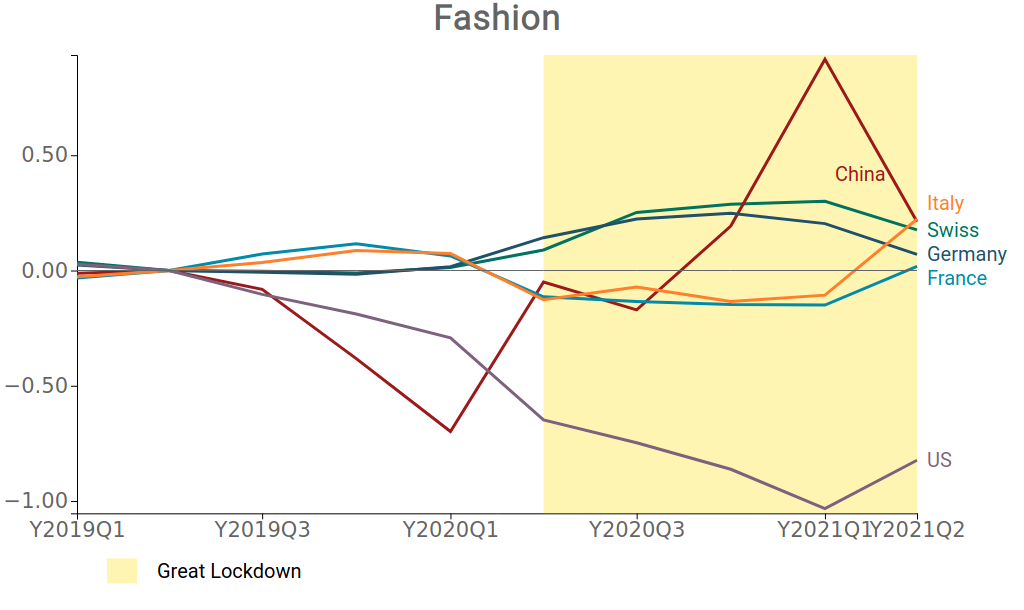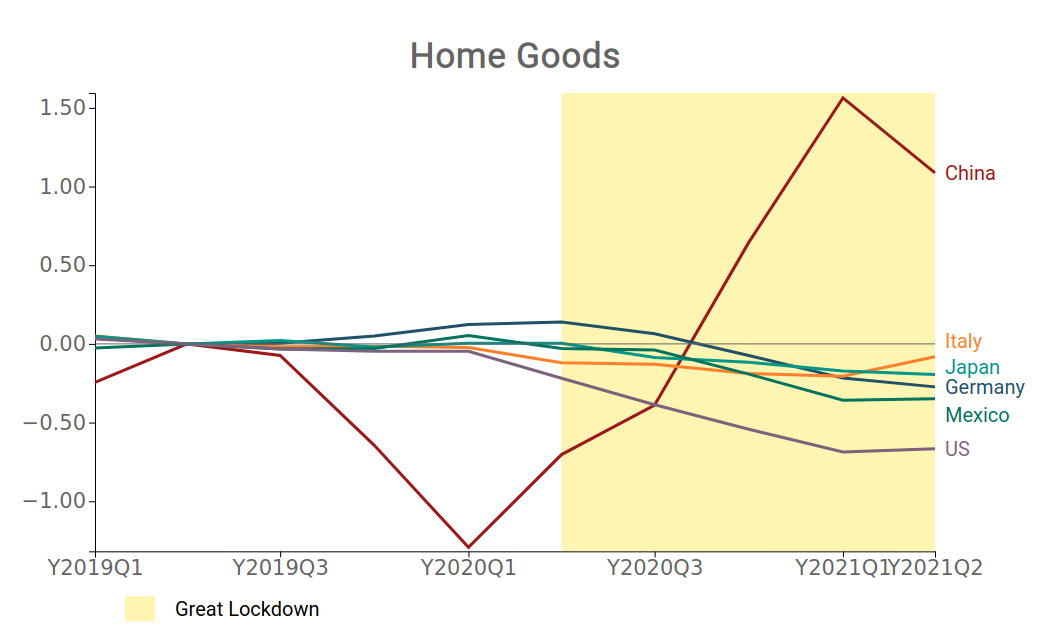Changes in Consumption Patterns and Global Competitive Arena
How the Covid19-related shift in consumer preferences has affected international competitive positioning
Published by Marzia Moccia. .
Covid-19 Home items Fashion Great Lockdown Conjuncture Consumption pattern Foreign markets Global economic trends
Log in to use the pretty print function and embed function.
Aren't you signed up yet?
signup!
In the previous article Shifting Consumer Habits: from Fashion to Home&Furniture, we documented how the pandemic context has progressively influenced the purchasing decisions of international consumers. The Covid-19 pandemic has in fact acted as a catalyst producing a profound change in the luxury industry, shifting the search for 'beauty' from goods typically linked to 'social space' to products intended for the domestic sphere.
This change in consumer preferences, which could be structural or transitory in nature, cannot, however, be completely neutral with regard to competitiveness of the leading countries of "Well-made" goods production.
The international arena
Analysing the competitive situation of the exporting countries in the higher price brackets, Europe in general has a strong comparative advantage in Fashion products: Italy, France, Switzerland and Germany are in fact the leading exporters worldwide in the highest price band. Although the leading competitors also change significantly from product to product, overall it can be said without any doubt that Fashion Design is European and sounds very Italian.

Source: ExportPlanning
For Home Goods, the comparative advantages of different countries differ significantly. As the chart below shows, the competitive strength of the Old Continent lies on just two countries: Germany and Italy.
At the same time, in the ranking of the main exporters in the highest price brackets we find a strong presence of China, specialised above all in the medium-high bracket. A minority share of the country's total exports has in fact seen a gradual upgrading, thanks to improvements in the planning, design and home automation of supplied products1. In addition, of particular note is the competitive positioning of North America (USA and Mexico) for the high-end.

Source: ExportPlanning
Even in this case, if we look at the several product, the list and positioning of the various competitors can vary, but the picture that emerges is certainly a much more global industry. The three biggest players are undoubtedly China, Germany and the United States (also taking into account the relocation of American companies to Mexico), while Italy and Japan keep a relative distance from the three main exporters in the sector.
On the basis of the long-term forces governing the international balance in the two sectors, it is particularly useful at this point to investigate the economic performance of the main segment leaders during the pandemic months, in light of the strong bias of consumption towards household products, to the disadvantage of the personal-fashion segment.


Source: ExportPlanning
Following the Great Lockdown, it is particularly evident how China has been able to take advantage of its leadership in the Home&Furniture industry to further consolidate its international competitive position, in the face of a general loss of competitiveness by all other exporting countries. In this context, the only timid exception seems to be Italy, which has reversed its downward trend in recent quarters, outperforming the direct German competitor. The situation is different for the Fashion segment: in the face of a very gradual recovery in world demand, European leadership does not seem to have been affected by short-term movements.
Thanks to a rapid and 'early' recovery from the negative effects of the pandemic compared to the West, the Chinese competitor has undoubtedly been able to respond to the sudden change in the lifestyle and consumption patterns of international buyers, making international competition increasingly fierce for the segments that now appear to be the most strategic ones. It will therefore be essential for companies operating in international markets to improve their knowledge of the changes underway in order to adapt their strategies and investments to the changed competitive environment.
1. For more information, see the following report..


